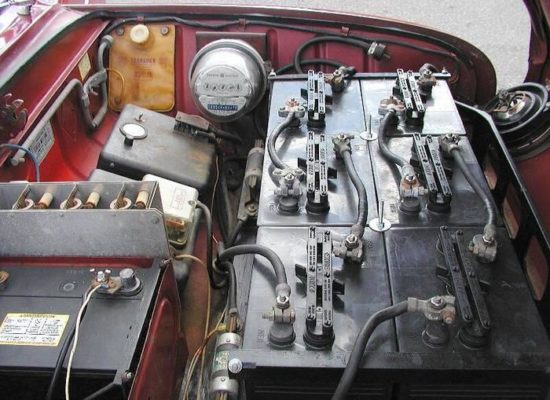The idea that car makers have been deliberately suppressing the development of electric vehicles is a myth. Throughout history, virtually all major manufacturers have dabbled in them. It’s just that they have had zero success.
That unfortunately reality doesn’t mean it isn’t interesting to look back and see the mistakes that they made. One of the most interesting examples was the Henney Kilowatt, which made a brief appearance in the US in 1959 before the National Union Electric Corporation shelved it. At first blush, the car looks like a Renault Dauphine. But when you go under the hood, all you find are large batteries and electric motors – no internal combustion engine.
There had been other electric vehicles before the Henney Kilowatt. But in the 1950s, many assumed that it was the first. Virtually every vehicle on the market – except the odd milk float here and there – ran on gas.
Compared to new electric cars, the Henney Dauphine was basic. Back then, the energy density of batteries was just too low to really provide any performance. So most of the vehicle’s mass was just battery and housing for it, making it uneconomical.
That was one of the reasons the National Union Electric Corporation decided to base the car on the Dauphine. Compared to other vehicles in its class, it was much lighter and had a rear-mounted engine compartment, suitable for electric motors.
The Corporation got to work modifying the car, fitting a new electric unit to the trunk space. Forty-seven examples of the car sold, mostly to employees. But today, only twelve known examples exist. The rest are either hiding in sheds around the world or have gone for scrap. And you can only drive two of them.
The Henney Dauphine Kilowatt came in two versions: one for short city journeys, and another for slightly longer trips.
The larger version of the car was able to travel 75 km and could get up to a top speed of 80 km/h (about 55 mph). The smaller one could travel 64 km and had a lower top speed under 50 mph.
The basic problem was the space that the batteries took up. A typical Henney weighed a massive 900 to 1100 kg which meant that getting it up to speed and stopping it was a challenge. It took an enormous amount of energy just to move the batteries themselves, let alone the rest of the car, making it impractical. But it was always going to be a rare passion project. Nobody believed that the vehicle could really rival the performance of its gas rivals.
Since the Henney Kilowatt, technology has come a long way. We have brand new battery chemistry and motor designs. And now the price of batteries has fallen so much that buying an electric vehicle is economical.
The Henney Kilowatt shows just how critical it is to have the right technology in place first. The car is a beautiful example of human ingenuity, it was just half a century ahead of its time. The vision was spot on, but the timing was way off.
Let us know what yo think in the Comments.
All images compliments of Dauphinomaniac.
Summary Article NameThe Henney Kilowatt: A Daring Electric Car From The Late 1950sDescriptionThe Henney Kilowatt was an electric car 50 years ahead of its time.
Article NameThe Henney Kilowatt: A Daring Electric Car From The Late 1950sDescriptionThe Henney Kilowatt was an electric car 50 years ahead of its time.








Speak Your Mind